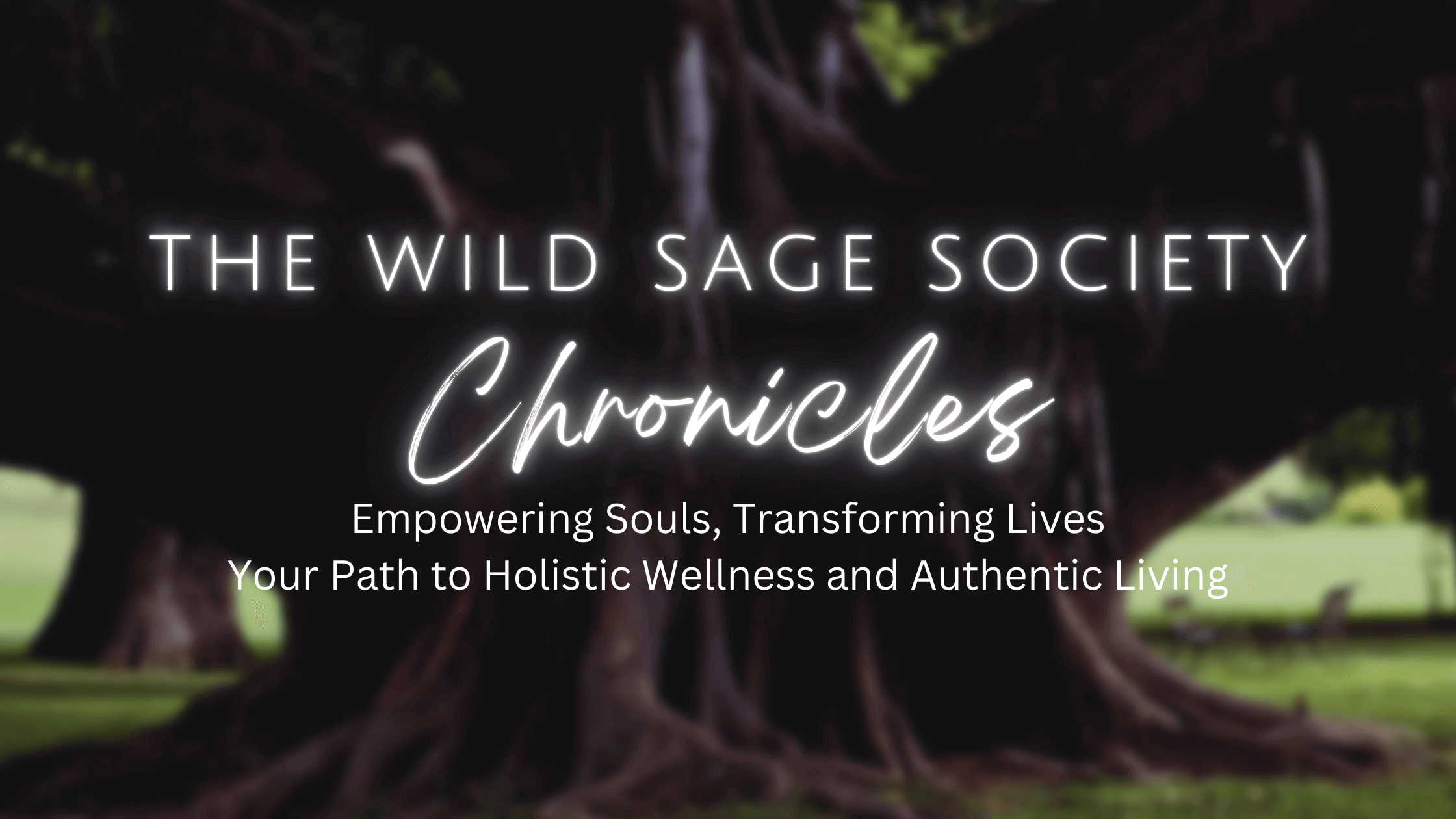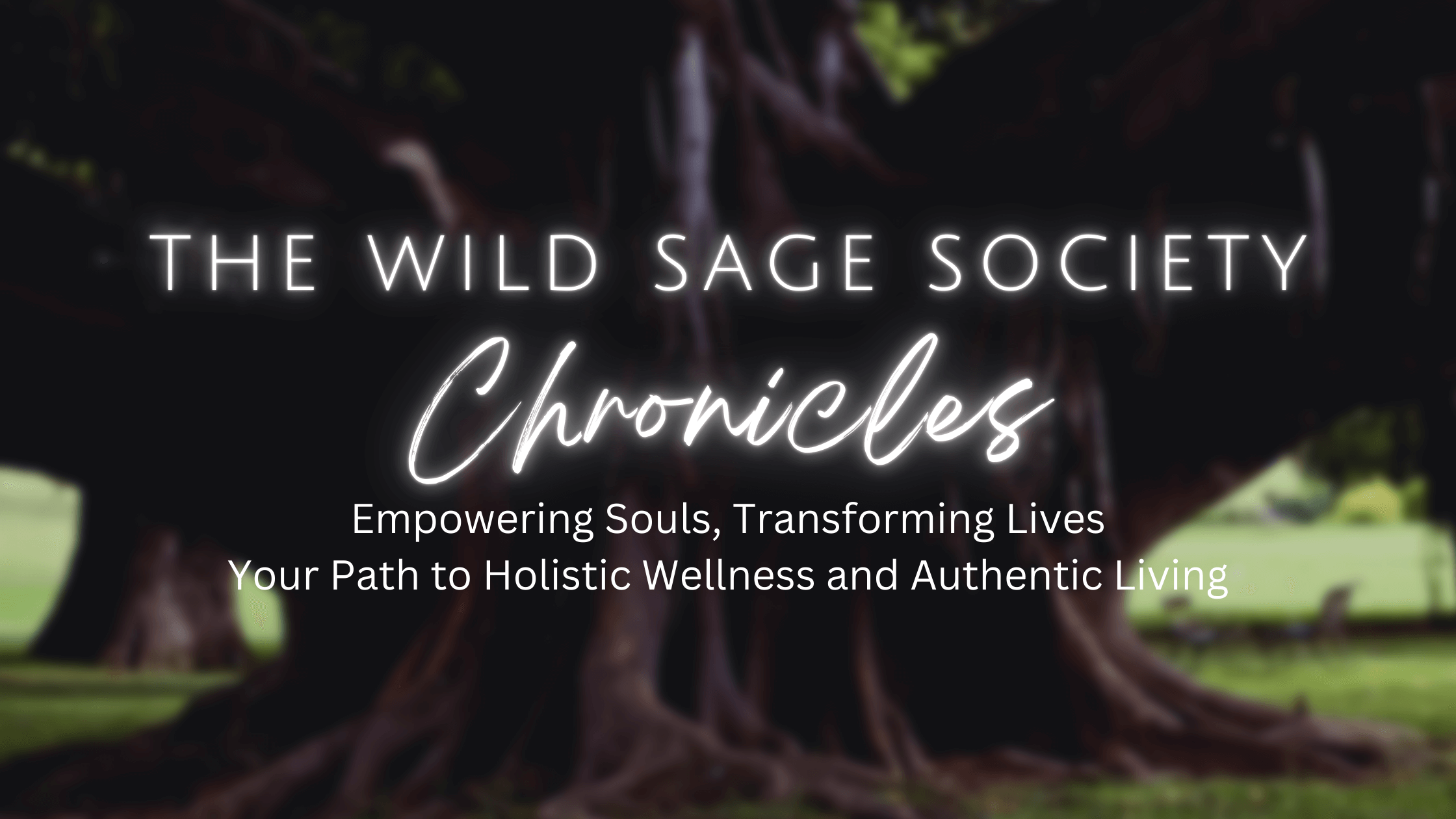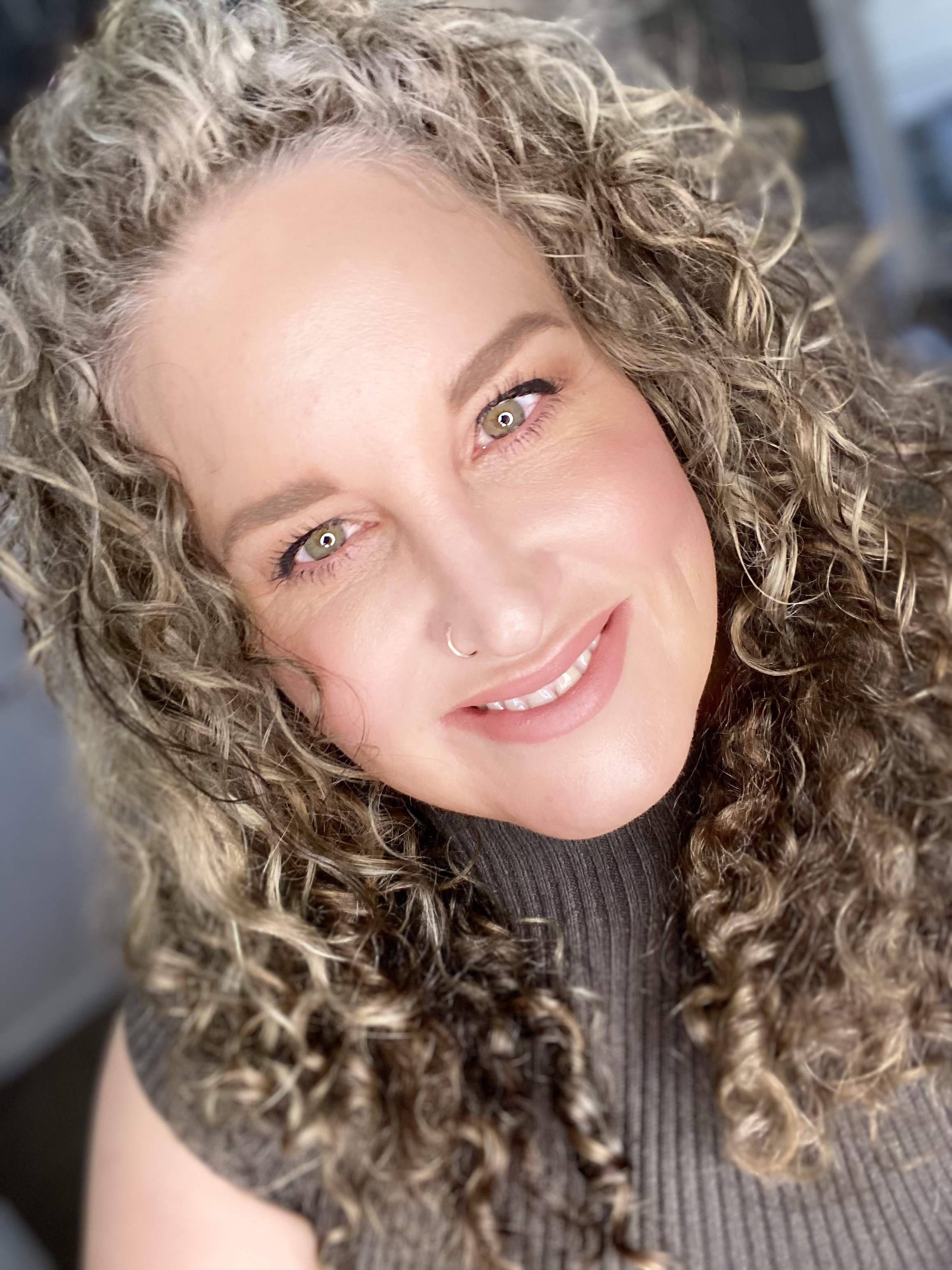
Autoimmune diseases are rapidly rising across the globe—and women are disproportionately affected. According to numerous clinical and epidemiological studies, women make up approximately 80% of all autoimmune disease diagnoses. Even more alarming, over half of these cases may be linked to one often-overlooked root cause: chronic stress.
In a world where stress is normalized, even glorified, many women silently carry the weight of unprocessed trauma, emotional burnout, hormonal disruption, and nervous system dysregulation. This blog explores why autoimmune disorders are so prevalent in women, how chronic stress plays a central role in triggering and exacerbating these conditions, and what can be done from a holistic, preventive, and integrative perspective.
What are Autoimmune Diseases?
Autoimmune diseases occur when the immune system, designed to protect the body from threats, becomes confused and starts attacking healthy tissue. There are over 100 recognized autoimmune diseases, with some of the most common including:
- Hashimoto’s thyroiditis
- Rheumatoid arthritis
- Systemic lupus erythematosus
- Multiple sclerosis
- Psoriasis
- Type 1 diabetes
- Celiac disease
These conditions can affect nearly any part of the body, including organs, joints, glands, and connective tissues, and often involve chronic pain, fatigue, inflammation, and systemic dysfunction.
Why Women?
The gender disparity in autoimmune conditions is one of the most intriguing and under-researched mysteries in modern medicine. Several biological, hormonal, and psychosocial factors contribute to the fact that 4 out of 5 people with autoimmune disease are women:
- Hormonal Influence: Estrogen has been shown to modulate immune activity. Fluctuations during menstruation, pregnancy, postpartum, and perimenopause can heighten autoimmune vulnerability.
- Genetics and Epigenetics: Women are more likely to carry specific gene variants associated with autoimmunity. However, genes alone don't determine destiny—environmental and emotional triggers often activate these susceptibilities.
- Immune System Robustness: Women typically have stronger immune responses than men. While this offers better protection against infections, it may also increase the risk of immune system misfiring.
- Social Conditioning and Suppression: From a psychosocial lens, women are often taught to care for others before themselves. Emotional suppression, boundary violations, and chronic people-pleasing can lead to internalized stress and trauma that dysregulates the immune and nervous systems.
The Chronic Stress - Autoimmune Link
Chronic stress isn't just a mental health issue—it’s a full-body phenomenon with physiological consequences. Stress activates the hypothalamic-pituitary-adrenal (HPA) axis, triggering the release of cortisol and other stress hormones. In short bursts, this system is adaptive. But when stress is unrelenting, the body never exits the fight-or-flight state.
Over time, chronic stress can cause:
- Immune system dysregulation: Stress impairs immune surveillance and balance, leading to overactivation or confusion of immune cells.
- Inflammation: Chronic stress increases inflammatory cytokines, which are directly implicated in autoimmune pathology.
- Gut permeability: Stress compromises the gut lining (“leaky gut”), allowing toxins and proteins to enter the bloodstream and trigger immune reactions.
- Epigenetic shifts: Persistent stress can literally alter gene expression, turning on or off genes that influence autoimmunity.
- Nervous system fatigue: Dysregulation of the autonomic nervous system can lead to parasympathetic shutdown (freeze response) or sympathetic overdrive (fight/flight) that never resolves.
A Holistic View of Women's Stress
Chronic stress in women is complex and multifactorial. It’s not just about a high-pressure job or a packed schedule—it’s about living in a body and society that rarely allows rest, expression, or full presence.
Consider the following chronic stressors:
- Emotional Labor: Unseen caregiving work, emotional support for others, and managing household responsibilities.
- Body Image & Beauty Pressure: Constant cultural messaging that a woman’s worth is tied to appearance.
- Medical Gaslighting: Being dismissed, misdiagnosed, or told symptoms are “in your head” by healthcare providers.
- Trauma (including microtraumas): Childhood adversity, sexual trauma, and accumulated relational ruptures that were never fully processed.
- Work-Life Imbalance: Navigating careers, motherhood, aging parents, and personal health with little structural support.
These layers of stress accumulate and manifest physically—often through chronic inflammation, hormone disruption, and immune confusion.
The Nervous System - Autoimmune Interface
One of the most exciting areas of research in autoimmune disease is the nervous system’s role in immune function. The vagus nerve, a key component of the parasympathetic nervous system, directly influences inflammation and immune modulation.
When the nervous system is dysregulated due to trauma or chronic stress, the body becomes stuck in survival mode, making it harder to mount a healthy immune response. This is why nervous system healing practices—such as somatic therapy, breathwork, vagal toning, and trauma release work—can be so powerful for those with autoimmune conditions.
Preventive & Integrative Strategies
Autoimmune diseases are complex and multifactorial. While there’s no one-size-fits-all cure, there are proactive, holistic approaches that can support immune regulation and reduce flare-ups:
1. Stress Reduction as Medicine
- Commit to daily nervous system regulation (breathwork, meditation, yoga nidra)
- Establish firm boundaries to avoid overextensio
- Schedule downtime like you would a medical appointment
- Explore somatic therapies or trauma-informed coaching
2. Anti-inflammatory Nutrition
- Eliminate common triggers: gluten, dairy, refined sugar, seed oils
- Increase omega-3s, leafy greens, and antioxidant-rich foods
- Heal the gut with probiotics, bone broth, and fermented foods
3. Detoxification Support
- Minimize chemical exposure (clean beauty, home products, water filters)
- Support liver and lymphatic function with herbs and hydration
- Regular movement and sweating (sauna, exercise) to eliminate toxins
4. Hormonal Balance
- Track your cycle and support each phase with nutrition and rest
- Work with a holistic provider to address estrogen dominance or adrenal fatig
- Adaptogens like ashwagandha, maca, and rhodiola can support resilience.
5. Spiritual & Energetic Hygiene
- Rituals of grounding, intention-setting, and energy clearing
- Reconnection to purpose, community, and personal sovereignty
- Nature time, creativity, and sacred pause
Real Talk: This Isn't " All in Your Head"
Many women with autoimmune conditions have been gaslit by the medical system, told their symptoms are psychosomatic, or left with little more than a lifelong prescription and a pat on the back.
Let’s be clear: your symptoms are real. But the current medical paradigm often separates physical illness from emotional trauma, immune function from stress levels, and the gut from the brain.
The truth is, the body keeps score. And chronic stress is not just a mental health issue—it’s a root cause of immune collapse.
Final Thoughts
illness, but as a body’s response to chronic stress, trauma, and systemic overload—especially in women.
Healing must go beyond symptom suppression. It must include nervous system regulation, emotional restoration, and structural changes that support women’s well-being at the cellular and societal level.
If you’re a woman dealing with unexplained symptoms, chronic inflammation, or a diagnosed autoimmune condition, know this:
- You are not alone.
- It’s not your fault.
- Your body isn’t broken—it’s brilliant and communicating.
- You can support healing—not overnight, but layer by layer.
The way forward is not just medical. It’s holistic, integrative, and deeply compassionate.
Resources & References:
- Harvard Health Publishing – Women and Autoimmune Diseases
- PubMed Central – Stress and Autoimmune Disease
- The Institute for Functional Medicine – Immune System and Stres
- Dr. Gabor Maté – “When the Body Says No
- Dr. Sara Gottfried – “The Hormone Cure”
- Donna Jackson Nakazawa – “The Autoimmune Epidemic”
- The Body Keeps the Score by Dr. Bessel van der Kolk

The Weight of Unspoken Emotions: How Suppressing Your Feelings Leads to Mental Fatigue
The Silent Drain of Emotional Suppression
For most of her life, Sarah was the kind of person who kept everything inside. She prided herself on being strong, logical, and unshakable. When anxiety bubbled up, she pushed it down. When disappointment crept in, she convinced herself to “move on.”
But over time, something shifted.
Sarah started experiencing chronic exhaustion, brain fog, and a constant feeling of heaviness—as if she were carrying an invisible weight. She wasn’t sleeping well, her motivation had plummeted, and even simple decisions felt overwhelming.
At first, she chalked it up to stress. But through deep inner work, she realized the truth: her mental fatigue wasn’t just from doing too much—it was from feeling too little.
By suppressing her emotions for years, her nervous system had been in survival mode, expending massive amounts of energy just to keep everything locked away. And that’s what so many of us do.
We tell ourselves:
🚫 “I don’t have time to feel this right now.”
🚫 “It’s not that big of a deal—I’ll just move on.”
🚫 “If I let myself feel this, I’ll fall apart.”
🚫 “I don’t have time to feel this right now.”
🚫 “It’s not that big of a deal—I’ll just move on.”
🚫 “If I let myself feel this, I’ll fall apart.”
But emotions don’t just disappear when we ignore them. They stay in the body, draining our energy, fogging our minds, and reinforcing fear-based decisions.
If you’ve been feeling mentally exhausted, overwhelmed, or stuck in hesitation, this might be the missing piece.
Today, we’re diving into:
✔ The science behind emotional suppression & mental fatigue
✔ How unprocessed emotions keep us stuck in fear-based decision-making
✔ Sarah’s journey from emotional shutdown to clarity & confidence
✔ Proven strategies to process emotions and regain mental energy
✔ The science behind emotional suppression & mental fatigue
✔ How unprocessed emotions keep us stuck in fear-based decision-making
✔ Sarah’s journey from emotional shutdown to clarity & confidence
✔ Proven strategies to process emotions and regain mental energy
The Science of Suppressed Emotions & Mental Fatigue
Why Do We Suppress Our Emotions?
From a young age, many of us were taught—directly or indirectly—that certain emotions are “too much.”
- Don’t cry, be strong.
- Don’t be angry, just let it go.
- Don’t be sad, look on the bright side.
So we learn to stuff our emotions down, intellectualize them, or avoid them altogether.
But here’s the problem: Suppressing emotions takes an enormous toll on the brain and body.
How Emotional Suppression Triggers Mental Fatigue
🔬 Neurologically, suppression drains cognitive resources. Research shows that suppressing emotions activates the prefrontal cortex (PFC)—the same part of the brain responsible for problem-solving, focus, and decision-making. When the PFC is overloaded with “keeping emotions in check,” there’s less energy left for clarity, creativity, and logical thinking.
🧠 Chronic suppression dysregulates the nervous system. Unprocessed emotions keep the body in a low-level stress response, leading to brain fog, fatigue, and difficulty concentrating.
⚡ Stored emotions create physical tension. The body holds onto unprocessed anger, grief, and anxiety, leading to tight muscles, headaches, digestive issues, and even chronic pain.
How Suppressed Emotions Lead to Fear-Based Decision-Making
When we suppress emotions instead of processing them, our brain stays stuck in survival mode. This means:
✔ We avoid making big decisions because deep down, we fear dealing with what they might bring up.
✔ We overthink every choice because the brain is already overloaded.
✔ We default to what feels safe and familiar, even if it’s not what we truly want.
✔ We overthink every choice because the brain is already overloaded.
✔ We default to what feels safe and familiar, even if it’s not what we truly want.
This is why suppressed emotions don’t just make us tired—they shape the way we move through life.
Case Study: Sarah’s Journey from Emotional Suppression to Mental Clarity
When Sarah started private 1:1 coaching and hypnosis, she wasn’t looking for emotional healing—she was looking for “productivity tools” because she was exhausted and unmotivated.
But within just a few sessions, it became clear:
💡 Her mental fatigue wasn’t a time-management issue—it was an emotional energy issue.
By processing unspoken emotions, releasing stored tension, and shifting her internal narrative, Sarah noticed:
✔ Her energy started coming back—not because she was doing less, but because she was carrying less.
✔ Her brain fog lifted, and decisions that once felt overwhelming became clear and obvious.
✔ She no longer felt emotionally numb—instead, she felt alive.
✔ Her energy started coming back—not because she was doing less, but because she was carrying less.
✔ Her brain fog lifted, and decisions that once felt overwhelming became clear and obvious.
✔ She no longer felt emotionally numb—instead, she felt alive.
She had been spending years fighting against herself—but once she started working with her emotions instead of suppressing them, everything changed.
How to Process Your Emotions & Restore Mental Energy
Like Sarah, you can break free from emotional suppression and reclaim your mental clarity. Here’s how:
1️⃣ Recognize the Signs of Emotional Suppression
If you’re constantly mentally exhausted, overthinking, or struggling with decision-making, ask yourself:
- Do I avoid difficult conversations to keep the peace?
- Do I feel like I don’t have time to deal with my emotions?
- Do I struggle to name what I’m feeling?
💡 Action Step: Spend 60 seconds checking in with yourself daily.
Ask: What emotion am I feeling right now? Where do I feel it in my body?
2️⃣ Create Space for Emotional Processing
Emotions are energy in motion—they need to move. When we don’t let them, they get stuck.
💡 Try This:
✔ Move your body (shaking, dancing, stretching) to release stored tension.
✔ Journaling prompt: “What emotions have I been avoiding, and why?”
✔ Breathwork exercise: Inhale for 4, exhale for 6—letting go of emotional weight.
✔ Move your body (shaking, dancing, stretching) to release stored tension.
✔ Journaling prompt: “What emotions have I been avoiding, and why?”
✔ Breathwork exercise: Inhale for 4, exhale for 6—letting go of emotional weight.
➡ Action Step: Choose one practice to release stored emotions this week.
3️⃣ Shift From Fear-Based Decisions to Intuitive Choices
Fear-based decisions often feel like:
🚨 Anxiety, tightness, or urgency in the body.
🚨 A need to control or overanalyze every outcome.
🚨 Choosing what feels “safe” over what feels right.
🚨 Anxiety, tightness, or urgency in the body.
🚨 A need to control or overanalyze every outcome.
🚨 Choosing what feels “safe” over what feels right.
💡 Try This:
✔ Before making a decision, check in with your body. Does this choice feel like relief or resistance?
✔ Name the fear. What are you afraid of happening? Is it real or a past wound talking?
✔ Remind yourself: You are safe to trust your decisions.
✔ Before making a decision, check in with your body. Does this choice feel like relief or resistance?
✔ Name the fear. What are you afraid of happening? Is it real or a past wound talking?
✔ Remind yourself: You are safe to trust your decisions.
➡ Action Step: Practice making one small decision from a place of trust instead of fear this week.
What’s Next?
🚀 If you missed this month’s class, don’t worry! The next From Fear to Freedom Masterclass is happening on May 22, 2025.
👉 Reserve Your Spot Now
Final Thoughts: You Don’t Have to Carry This Alone
Emotional suppression isn’t strength—it’s survival mode. But true power comes from processing, releasing, and moving forward with clarity.
You deserve to live without the mental exhaustion of holding it all in.
Are you ready to step into a lighter, more confident version of yourself? Let’s take that step together.
🚀 Join the next Masterclass & start your transformation.
Breaking the Cycle: How Negative Thought Patterns and Isolation Keep You Stuck in Fear-Based Thinkin

Breaking the Cycle: How Negative Thought Patterns and Isolation Keep You Stuck in Fear-Based Thinking
The Silent Struggle of Isolation and Negative Thinking
For years, Mary thought she was simply an overthinker. She analyzed every situation from every possible angle, replayed past conversations in her mind, and feared she was always saying or doing the wrong thing. At the same time, she began pulling away from friends and social interactions—partly because she feared judgment, partly because she felt like no one truly understood her.
What started as self-protection turned into self-isolation.
Instead of breaking free from the anxiety that haunted her, Mary became trapped in a cycle of negative thought patterns and lack of social connection—two of the biggest reinforcers of fear-based thinking.
This is a reality for so many people navigating anxiety and self-doubt. The more we listen to our fear-based thoughts, the more we withdraw. And the more we withdraw, the harder it is to break free from those very thoughts.
But the good news? You can rewire your mind and reconnect to the world again.
Today, we’ll explore:
✔ How negative thought patterns reinforce anxiety and fear-based decisions
✔ The link between social disconnection and stress
✔ Mary’s transformational journey from self-isolation to confidence
✔ Science-backed strategies for rewiring negative thought loops and rebuilding connection
✔ How negative thought patterns reinforce anxiety and fear-based decisions
✔ The link between social disconnection and stress
✔ Mary’s transformational journey from self-isolation to confidence
✔ Science-backed strategies for rewiring negative thought loops and rebuilding connection
The Science of Negative Thought Patterns & Social Isolation
Why Negative Thought Loops Keep You Stuck
Your brain is constantly interpreting the world based on past experiences and thought patterns. When negative thinking dominates your internal dialogue, your brain creates a cognitive bias—meaning you unconsciously look for evidence to confirm those negative thoughts.
- Example: If you believe people don’t like you, you’ll focus on moments that reinforce that belief (a text left on read, someone forgetting to invite you somewhere) and ignore any signs to the contrary.
- Example: If you think you’re going to fail, your brain will focus on past mistakes instead of successes, reinforcing inaction.
The Isolation-Anxiety Loop
Humans are wired for connection. But when we’re overwhelmed with anxiety and self-doubt, we often isolate ourselves. Unfortunately, the more disconnected we become, the worse our fear-based thinking gets.
✔ Social disconnection increases cortisol (the stress hormone), keeping the body in fight-or-flight mode.
✔ Lack of social support reinforces the belief that "I'm alone in this," deepening negative self-perception.
✔ Without external feedback, negative thought loops spiral unchecked.
✔ Lack of social support reinforces the belief that "I'm alone in this," deepening negative self-perception.
✔ Without external feedback, negative thought loops spiral unchecked.
This is what happened to Mary. As she pulled away from social settings, she lost the support and perspective that could have helped her challenge her fears.
Case Study: Mary’s Journey from Isolation to Confidence
Mary joined private 1:1 coaching and hypnosis after spending years trapped in self-doubt. She constantly worried about how others perceived her, overanalyzed social interactions, and convinced herself that people didn’t want her around.
She knew she wanted to reconnect—to people, to joy, to a sense of ease within herself—but every time she tried, her fear-based thinking would pull her back.
Through deep mindset work, nervous system regulation, and hypnosis, Mary learned:
✔ How to challenge the cognitive distortions fueling her anxiety.
✔ How to reconnect with safe, supportive people instead of isolating.
✔ How to trust herself and others again.
✔ How to challenge the cognitive distortions fueling her anxiety.
✔ How to reconnect with safe, supportive people instead of isolating.
✔ How to trust herself and others again.
Her biggest breakthrough? Learning that her thoughts were not facts.
By rewiring her brain for confidence and connection, Mary was able to rebuild relationships, trust herself in social settings, and break free from the fear that had once dictated her every move.
How to Break Free from Negative Thought Patterns & Social Isolation
Like Mary, you can shift from self-doubt to self-trust, from isolation to connection. Here’s how:
1️⃣ Rewire Your Negative Thought Loops
Negative thought patterns can be unlearned. Your brain is constantly forming new neural connections—so the more you challenge limiting beliefs, the weaker they become.
💡 Try This:
- Name your negative thought. Example: “Nobody likes me.”
- Ask yourself: Is this fact or fear? What evidence do I have?
- Reframe it. Example: “I am loved, and I am working on building deeper connections.”
➡ Action Step: Write down one recurring negative thought and practice challenging it daily.
2️⃣ Reconnect with Safe Social Spaces
Fear makes us believe that withdrawal is safety. But true safety comes from connection.
💡 Try This:
- Start small. Reach out to one supportive person instead of forcing big social outings.
- Join a group aligned with your interests. Community heals isolation.
- Practice receiving. Let people show up for you instead of assuming they won’t.
➡ Action Step: Identify one way to reconnect this week—whether it’s a conversation, a support group, or an event.
3️⃣ Regulate Your Nervous System in Social Settings
If social situations trigger your fight-or-flight response, your nervous system needs reassurance that you’re safe.
💡 Try This:
- Before a social event, step into sunlight, take deep breaths, and ground yourself.
- During interactions, focus on body language and facial expressions instead of anxious thoughts.
- After, reflect on positive moments instead of analyzing perceived mistakes.
➡ Action Step: Practice one grounding technique before your next social interaction.
Your Next Step: Join the From Fear to Freedom Masterclass
If you’ve been struggling with negative thought patterns and social disconnection, you don’t have to navigate it alone.
🔥 Join the FREE From Fear to Freedom Masterclass on April 22, 2025, and learn how to:
✔ Rewire your mind to break negative thought loops
✔ Rebuild confidence and trust in yourself
✔ Overcome fear-based isolation and reconnect with ease
✔ Rewire your mind to break negative thought loops
✔ Rebuild confidence and trust in yourself
✔ Overcome fear-based isolation and reconnect with ease
🎁 BONUS: Exclusive self-hypnosis session for deep subconscious healing!
👉 Reserve Your Spot Now
Final Thoughts: You Are Not Alone
Fear convinces us that we are alone, that we are unworthy, that things will never change.
But the truth? Your thoughts are not facts.
By rewiring your mind and reconnecting with supportive people, you can break the cycle of anxiety, fear-based thinking, and isolation—just like Mary did.
🚀 Let’s do this together.
Join the From Fear to Freedom Masterclass today.

Breaking Free from Fear-Based Thinking: How Chronic Anxiety and Depression Keep You Stuck
Living in a Loop of Fear-Based Thinking
For years, Andrea believed that anxiety was simply a part of who she was. She constantly second-guessed herself, avoided making big decisions, and overanalyzed every possible outcome. It wasn’t just indecision—it was a constant state of fear-based thinking, a loop that kept her feeling stuck, overwhelmed, and exhausted.
Like many others, Andrea had learned to live in survival mode. Her nervous system was always on high alert, and she struggled to trust herself, her instincts, and her ability to create real change in her life.
She wasn’t alone.
Fear-based thinking, fueled by chronic anxiety and depression, is more than just over-worrying—it’s a neurological and physiological response that traps us in a cycle of hesitation, avoidance, and stress.
But here’s the good news: this cycle can be broken.
Today, we’ll explore:
✔ The science behind fear-based thinking and chronic stress
✔ How anxiety & depression keep you stuck in survival mode
✔ Andrea’s transformational journey from fear to freedom
✔ Proven strategies for rewiring your brain for clarity, confidence, and peace
✔ The science behind fear-based thinking and chronic stress
✔ How anxiety & depression keep you stuck in survival mode
✔ Andrea’s transformational journey from fear to freedom
✔ Proven strategies for rewiring your brain for clarity, confidence, and peace
The Science of Fear-Based Thinking & Chronic Stress
Why Does Anxiety Keep Us Stuck?
Fear-based thinking isn’t just an emotional habit—it’s a biological response. When you experience chronic anxiety or depression, your brain becomes wired to operate in survival mode, meaning:
- Your amygdala (fear center) is hyperactive, making you more reactive and prone to panic.
- Your prefrontal cortex (logic & reasoning) is suppressed, making it harder to think clearly and make decisions.
- Your nervous system stays in fight-or-flight mode, keeping your body in a heightened state of stress.
This isn’t just about “negative thinking.” It’s a deep-rooted physiological loop that reinforces itself over time. The longer you stay in chronic stress, the harder it becomes to trust your own decisions, break free from fear, and move toward what you truly want.
Common Signs You’re Stuck in Fear-Based Thinking:
✔ Overanalyzing every choice but never acting
✔ Feeling paralyzed by what could go wrong
✔ Seeking constant reassurance before making decisions
✔ Letting self-doubt overpower your desires
✔ Struggling to relax, even in safe situations
✔ Overanalyzing every choice but never acting
✔ Feeling paralyzed by what could go wrong
✔ Seeking constant reassurance before making decisions
✔ Letting self-doubt overpower your desires
✔ Struggling to relax, even in safe situations
Case Study: Andrea’s Journey from Fear to Freedom
For most of her life, Andrea felt like a passenger in her own mind. Her inner dialogue was full of “What if?”
- What if I fail?
- What if people judge me?
- What if I make the wrong decision and regret it forever?
She avoided risks, stayed in relationships that drained her, and hesitated to make changes in her business—even when she knew they were necessary.
When Andrea began her private 3-month 1:1 coaching and hypnosis journey, she wasn’t looking for a quick fix. She had already spent years exploring traditional therapy, self-help books, and meditation apps, yet she still felt deeply disconnected from herself.
Through a combination of nervous system regulation, subconscious reprogramming, and somatic healing techniques, she began to understand that her fear wasn’t her fault—but it was something she could change.
✔ She learned how her past experiences shaped her fear responses.
✔ She practiced simple but powerful tools to calm her nervous system.
✔ She discovered how to rewire her brain for clarity and confidence.
✔ She practiced simple but powerful tools to calm her nervous system.
✔ She discovered how to rewire her brain for clarity and confidence.
Within weeks, Andrea noticed a shift. She wasn’t just thinking differently—she was feeling different. Decisions became easier. Her body felt lighter. The fear that once ruled her mind no longer had control.
How to Break the Cycle of Fear-Based Thinking
Just like Andrea, you can shift from fear to freedom. Here’s how:
1️⃣ Calm Your Nervous System First
When you’re stuck in chronic anxiety or depression, your body is constantly in a state of fight-or-flight. Before you can change your thoughts, you need to signal to your brain that you are safe.
💡 Try This: Step outside, take a couple of slow, deep breaths, and let the sunlight hit your skin. Then, walk barefoot on the grass for a few moments, feeling the ground beneath you. This simple practice helps reset your nervous system, regulate your circadian rhythm, and bring you back to the present moment.
➡ Action Step: Each morning, take a few minutes to breathe, soak up sunlight, and connect with the earth—a small but powerful way to calm your body and mind.
2️⃣ Shift Your Inner Dialogue
Your brain believes the stories you tell it. If your thoughts are full of self-doubt, fear, and worst-case scenarios, that’s the reality your mind will reinforce.
💡 Try This:
- Journaling Prompt: Write down a fear-based thought and then reframe it as a possibility.
- Example: “What if I fail?” → “What if this turns out better than I expected?”
- Mantra for the Week: “I trust myself. I trust my decisions. I am safe to move forward.”
➡ Action Step: Start catching yourself in fear-based thoughts and reframe them with curiosity instead of judgment.
3️⃣ Take Small, Safe Risks
One of the best ways to break the fear-based cycle is to prove to your brain that taking action is safe.
💡 Try This:
- Take one small step daily that challenges fear.
- Example: If you fear public speaking, practice talking on video for 30 seconds.
- Celebrate small wins (your brain needs positive reinforcement!).
➡ Action Step: Identify one area where fear holds you back and take one small step forward this week.
Your Next Step: Join the From Fear to Freedom Masterclass
If you recognize yourself in Andrea’s story, this is your invitation to step out of fear and into confidence.
🔥 Join the FREE From Fear to Freedom Masterclass on April 22, 2025, and learn how to:
✔ Rewire your brain for clarity & confidence
✔ Calm your nervous system & break the fear cycle
✔ Make fearless decisions & trust yourself again
✔ Rewire your brain for clarity & confidence
✔ Calm your nervous system & break the fear cycle
✔ Make fearless decisions & trust yourself again
🎁 BONUS: Exclusive self-hypnosis session for deep subconscious healing!
👉 Reserve Your Spot Now
Final Thoughts: You Are Not Your Fear
Fear-based thinking might have shaped your past, but it doesn’t have to define your future.
By calming your nervous system, shifting your inner dialogue, and taking small, intentional steps forward, you can rewire your brain for clarity, confidence, and true freedom.
Like Andrea, you are capable of breaking free from fear. The only question is—are you ready to take the first step?
🚀 Let’s do this together. Join the From Fear to Freedom Masterclass today.

Living in a Constant State of Stress
Have you ever felt like your mind never stops racing? Like no matter how much you rest, you still wake up exhausted, your body tense, and your thoughts clouded with worry?
You’re not alone. Chronic stress is silently wreaking havoc on millions of people’s health, especially women navigating midlife transitions, hormonal fluctuations, career shifts, and personal growth challenges.
Stress itself isn’t the problem—our bodies are designed to handle short bursts of it. But when stress becomes constant, it leads to anxiety, brain fog, decision paralysis, and long-term health risks.
If you’ve been stuck in cycles of exhaustion, indecision, and overwhelm, keep reading. Today, we’re diving into:
✔ The science behind chronic stress and high cortisol
✔ How stress rewires your brain, keeping you trapped in fear-based thinking
✔ Proven tools for regulating your body’s stress response
✔ A transformational opportunity to break free from stress in our From Fear to Freedom Masterclass
✔ The science behind chronic stress and high cortisol
✔ How stress rewires your brain, keeping you trapped in fear-based thinking
✔ Proven tools for regulating your body’s stress response
✔ A transformational opportunity to break free from stress in our From Fear to Freedom Masterclass
The Science of Chronic Stress & Cortisol Overload
What is Cortisol?
Cortisol is your body’s primary stress hormone, responsible for activating your fight-or-flight response in moments of perceived danger. It plays an essential role in survival—but when stress becomes chronic, your body continuously produces cortisol, leaving you stuck in high alert mode.
The Effects of Chronic Cortisol Overload
When cortisol levels stay elevated for extended periods, the consequences ripple through your entire body and mind:
- Decision Paralysis – Overanalyzing every choice, unable to move forward
- Emotional Instability – Mood swings, increased anxiety, and heightened reactivity
- Brain Fog & Forgetfulness – Struggling to focus, recall details, and stay organized
- Sleep Disruption – Tossing and turning at night, waking up exhausted
- Increased Cravings – Seeking sugar, caffeine, or junk food for quick energy boosts
Long-term cortisol imbalance doesn’t just make you feel off—it contributes to hormonal imbalances, weakened immunity, digestive issues, weight gain, and chronic fatigue.
How High Cortisol Hijacks Your Decision-Making & Keeps You Stuck
When stress dominates your life, your brain shifts into survival mode, prioritizing immediate reactions over logical, forward-thinking decisions.
Here’s what happens:
✔ Your Amygdala (Fear Center) Becomes Hyperactive → Making you more reactive and prone to anxiety
✔ Your Prefrontal Cortex (Logic Center) Gets Suppressed → Making it harder to think critically and problem-solve
✔ Your Nervous System Stays in a Constant Fight-or-Flight State → Keeping you on edge, exhausted, and indecisive
✔ Your Prefrontal Cortex (Logic Center) Gets Suppressed → Making it harder to think critically and problem-solve
✔ Your Nervous System Stays in a Constant Fight-or-Flight State → Keeping you on edge, exhausted, and indecisive
This results in fear-based thinking patterns, such as:
🚨 Overanalyzing decisions because you don’t trust yourself
🚨 Procrastinating due to overwhelm
🚨 Avoiding necessary choices out of fear of failure
🚨 Procrastinating due to overwhelm
🚨 Avoiding necessary choices out of fear of failure
The good news? This cycle CAN be broken. Let’s explore how.
3 Proven Ways to Lower Cortisol & Reclaim Mental Clarity
1️⃣ Engage in Nervous System Regulation
When your nervous system is dysregulated, shifting out of stress feels nearly impossible. The key is to activate your parasympathetic nervous system (rest & digest mode) so your body can restore balance.
Try This: Resource State Anchoring
- Place your hand on your heart.
- Take a deep breath in for 4 seconds, hold for 2, and exhale for 6.
- Visualize a moment of peace or happiness and allow your body to fully experience that feeling.
This signals to your brain: “I am safe.”
💡 Action Step: Set a 5-minute timer and practice this technique daily.
2️⃣ Reset Your Thought Patterns with Small Actions
Fear-based thoughts reinforce stress patterns, keeping you trapped in cycles of inaction and self-doubt. To break the cycle, start with:
🔹 Journaling a fear-based thought and rewriting it from a neutral perspective.
🔹 Taking one small action to prove to your brain that you are in control.
🔹 Moving your body (walking, stretching, dancing) to shift stagnant energy.
🔹 Taking one small action to prove to your brain that you are in control.
🔹 Moving your body (walking, stretching, dancing) to shift stagnant energy.
💡 Action Step: Ask yourself, “What is one thing I can do right now that aligns with my well-being?”
3️⃣ Balance Cortisol with Better Sleep & Rest Practices
High cortisol at night makes falling and staying asleep difficult, leading to:
❌ Restless sleep
❌ Early waking (especially between 2-4 AM)
❌ Fatigue, even after a full night of rest
❌ Early waking (especially between 2-4 AM)
❌ Fatigue, even after a full night of rest
What to Do Instead:
✔ Avoid screens 1-2 hours before bed (blue light keeps cortisol high).
✔ Try Jin Shin Jyutsu Finger Holding before bed—holding your thumb reduces worry and promotes relaxation.
✔ Listen to a guided self-hypnosis for deep sleep to reprogram your stress response overnight.
✔ Try Jin Shin Jyutsu Finger Holding before bed—holding your thumb reduces worry and promotes relaxation.
✔ Listen to a guided self-hypnosis for deep sleep to reprogram your stress response overnight.
💡 Action Step: Tonight, hold your thumb for 2 minutes before bed and notice how your body responds.
Break the Stress Cycle with the From Fear to Freedom Masterclass!
🔥 You don’t have to live in survival mode. It’s time to take back your calm, clarity, and confidence.
🌿 Join the FREE From Fear to Freedom Masterclass on April 22, 2025, and learn how to:
✅ Calm your nervous system and rewire stress patterns
✅ Reduce cortisol & break fear-based decision loops
✅ Trust yourself to make clear, confident choices
✅ Calm your nervous system and rewire stress patterns
✅ Reduce cortisol & break fear-based decision loops
✅ Trust yourself to make clear, confident choices
🎁 BONUS: Exclusive self-hypnosis session for deep healing!
👉 Reserve Your Spot Now
🚀 Rewire stress, reclaim clarity, and start making fearless decisions—let’s do this together!
Final Thoughts: You Have the Power to Heal
If chronic stress and burnout have been running your life, this is your invitation to take back control.
By understanding how cortisol impacts your body and mind—and applying simple, evidence-based strategies—you can:
✔ Break free from cycles of stress and overwhelm
✔ Restore balance to your nervous system
✔ Reclaim the clarity, confidence, and energy you deserve
✔ Break free from cycles of stress and overwhelm
✔ Restore balance to your nervous system
✔ Reclaim the clarity, confidence, and energy you deserve
Are you ready to step into your next chapter—one rooted in peace, power, and purpose?
Let’s make it happen together. Join the From Fear to Freedom Masterclass and take the first step today.















